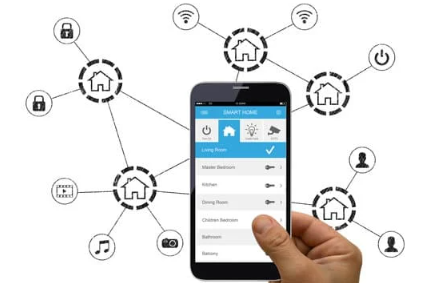
Blog
Software Architecture: The Blueprint for Success with CodriveIT

Imagine building a skyscraper without a meticulously designed blueprint. The result would be chaos – unstable foundations, disconnected floors, and a structure prone to collapse. The same principle applies to software. Without a well-defined Software Architecture, even the most brilliant code can lead to an unstable, unscalable, and ultimately unsustainable application.
At CodriveIT, we understand that robust and thoughtful software architecture is the fundamental backbone of any successful digital product. It's the high-level design that defines the structure, behavior, and interaction of components within a software system. It dictates how the system will meet its functional and non-functional requirements, ensuring it's not just functional, but also efficient, secure, scalable, and maintainable in the long run.
Why is Software Architecture Critical for Your Business?
Investing in professional software architecture is not an optional luxury; it's a strategic imperative that directly impacts your project's success and your business's future. Here's why:
- Ensures Scalability: A well-architected system can handle increased user loads and data volumes without sacrificing performance. This is crucial for businesses anticipating growth.
- Boosts Performance: Optimized architecture minimizes bottlenecks, latency, and resource consumption, leading to faster, more responsive applications.
- Enhances Maintainability & Extensibility: A clear, modular architecture makes it easier for developers to understand, debug, update, and add new features to the system, reducing maintenance costs and time.
- Improves Reliability & Robustness: Thoughtful architecture accounts for error handling, fault tolerance, and resilience, making the software less prone to crashes and more capable of recovering from failures.
- Strengthens Security: Security considerations are built into the architecture from the ground up, identifying potential vulnerabilities early and implementing preventative measures.
- Reduces Development Costs & Risks: A solid architectural plan prevents costly rework down the line, streamlines the development process, and reduces the likelihood of project delays or failures.
- Facilitates Collaboration: A well-documented architecture provides a common understanding for all stakeholders – developers, project managers, and business owners – fostering effective communication and collaboration.
- Supports Technology Evolution: A flexible architecture can adapt to new technologies and frameworks more easily, future-proofing your software investment.
- Aids in Business Alignment: Architecture ensures that the software solution directly aligns with and supports your strategic business goals, delivering tangible value.
CodriveIT's Approach to Software Architecture:
At CodriveIT, our experienced software architects don the hats of engineers, strategists, and problem-solvers. We work closely with you to understand your vision, business context, and technical constraints, translating them into a blueprint that guarantees success. Our process typically involves:
- Requirements Analysis & Vision Alignment: We thoroughly analyze your functional and non-functional requirements (performance, security, scalability, usability, etc.), ensuring the architecture directly addresses your business needs and long-term vision.
- Architectural Pattern Selection: We evaluate and select the most appropriate architectural patterns (e.g., Microservices, Monolithic, Event-Driven, Layered, Serverless) based on your project's complexity, scale, budget, and future goals.
- Component Design & Interface Definition: We define the various components of the system, their responsibilities, and how they interact through well-defined interfaces and APIs.
- Technology Stack Recommendation: We recommend the optimal programming languages, frameworks, databases, cloud platforms (AWS, Azure, GCP), and other tools that best fit the architectural design and project requirements.
- Security & Performance Considerations: We embed security best practices and performance optimization strategies directly into the architectural design, preventing vulnerabilities and ensuring optimal speed from the outset.
- Scalability & Resilience Planning: We design for future growth, anticipating how the system will handle increased user loads and data, and incorporating mechanisms for fault tolerance and disaster recovery.
- Documentation & Communication: We create clear, comprehensive architectural documentation (diagrams, design rationale, decision logs) that serves as a single source of truth for the development team and stakeholders.
- Architectural Review & Validation: We conduct rigorous reviews to validate the architectural design against requirements, potential risks, and best practices, ensuring its soundness before development begins.
- Guidance Throughout Development: Our architects remain involved throughout the development lifecycle, providing guidance, addressing architectural challenges, and ensuring the implementation adheres to the defined blueprint.
Common Architectural Styles and Expertise at CodriveIT:
Our architects are proficient in various architectural styles, selecting the most suitable one to solve your specific challenges:
- Monolithic Architecture: A traditional, single-tiered application where all components are tightly coupled. Often suitable for smaller, simpler applications.
- Microservices Architecture: A collection of loosely coupled, independently deployable services that communicate via APIs. Ideal for complex, large-scale systems requiring high scalability and agility.
- Event-Driven Architecture: Components communicate asynchronously through events, promoting loose coupling and responsiveness. Excellent for real-time systems and complex data flows.
- Serverless Architecture: Applications are built and run without needing to manage servers. Highly scalable and cost-effective for specific use cases (e.g., APIs, data processing).
- Layered Architecture: Organizes components into horizontal layers (e.g., presentation, business logic, data access). Provides clear separation of concerns, improving maintainability.
- Cloud-Native Architecture: Designed specifically to leverage the benefits of cloud computing platforms (e.g., auto-scaling, managed services, resilience).





